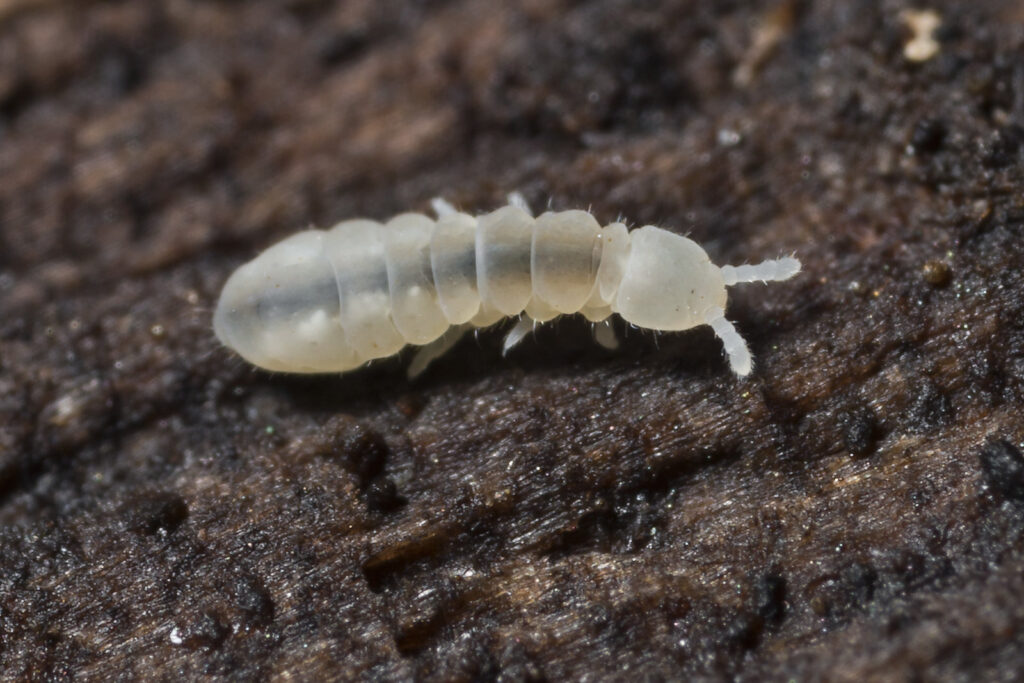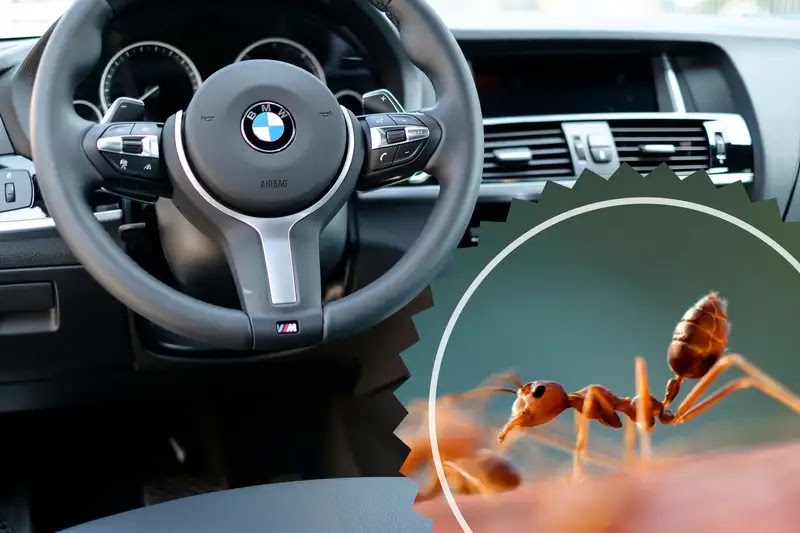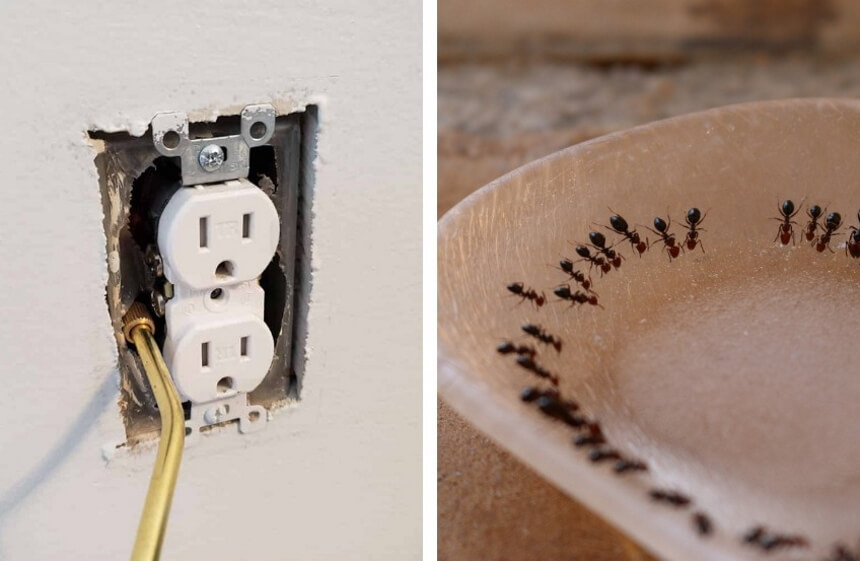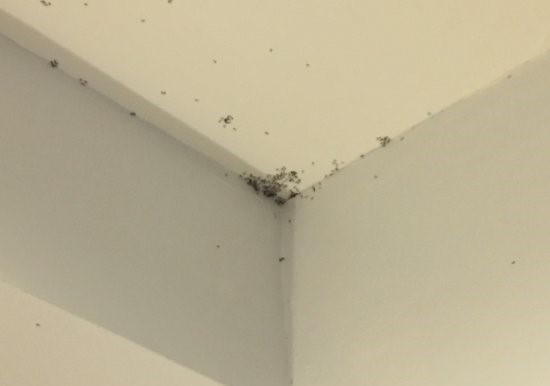

Did you know that the springtail can jump up to 100 times his own length, even though they don’t have any wings? These little bugs usually only make themselves known once they’ve gathered in clusters.
They may not be very appetizing, they’re harmless on their own. But they do point towards a bigger problem, which is why you’ll want to get rid of your springtails as quickly as possible, and find out what the rood of the problem is.

Springtails are tiny little critters from the order Collembola that love dark and damp environments. While they can become a problem once they’ve found a way into your home, they’re not actually considered pests. Sometimes these little bugs are a little misunderstood because they have a lot of similarities with fleas, and fleas can’t only bite, they’re harmful to humans and pets alike.
They’re grow to be about 1/16 inch and come in colors varying from white to black and everything betwixt. They’re shape can also vary from oblong to elongated, but have a 4-segmented body. Usually, they only become conspicuous once they’ve grown in numbers and start to cluster. Though they look like insects, they are not. Insects possess an external chewing system, whereas springtails have an internal chewing system. This is why springtails can’t bite, either. Springtails also have two recognizable antennae, and fleas don’t.
Springtails get their name from the jumping movement they make when disturbed, which is caused by an external body part that’s called a furcula. This little forklike mechanism pops the bug a few inches into the air when released, making it seem like springtails can fly when they don’t even have wings.
Springtails prefer to live outside and will stay there if they can, but if conditions become unbearable, they will go in search for a better home. When that happens, springtails will look for places that are damp and moldy. Springtails may be omnivores, they do have a preference for mold and fungi to sustain themselves with, which is found in damp places.
In your garden that can mean a pile of tree trimmings, under patio slabs, in flower pots, hiding under mulch, and naturally in any kind of damp soil. Springtails an important part of the ecosystem, so unless they are causing problems, consider leaving them be.
Inside your home they’re prone to congregate in crawlspaces and basements that have gotten damp and lack in proper ventilation, near leaky pipes and roofs, and even underneath floorboards, underneath kitchen sinks, and bathtubs that haven’t been sealed correctly.
Springtails are not actually considered a pest, but they can become a problem when not taken care of in a timely manner. Springtails don’t carry any diseases, and can’t bite because of their internal chewing mechanism. However, discovering them in your home can be a sign of other, more serious problems, such a mold or fungi problem, or a leak that you may not have discovered yet. In the worst case scenario you may even be dealing with porous basement walls. Luckily, realizing there is a problem in the first place is the first step in getting rid of springtails.
When dryer months arrive, springtails often migrate into unsuspecting homes that are vulnerable for an infestation because of mold or damp problems. If given the option, springtails do prefer staying in their natural habitat.
The very first step of getting rid of a springtail infestation in your house is cleaning the environment. Swarms of springtails are easily sucked up with a vacuum, after which you should wipe down the surface. Making a solution of any of the following products to clean the infected area should mean the surface becomes so acidic to springtails that they will burn and die when they come into contact with it.
It’s vital to locate the nesting site, especially when getting rid of springtails in your home. Springtails usually have a specific place where they nest and breed. If you don’t locate and destroy the nesting site of the springtails, they will come back time and again, regardless of which natural remedy you use to get rid of the springtails.
There are glue traps available to tackle a springtail problem. These look like small boxes that lure various bugs into it, where they get stuck and eventually die. They’re not very suitable for bigger infestations and are rather for when you catch the problem early on. Glue traps last a few weeks to a few months.
Baking powder is useful in a lot of different ways, and one of them is assisting in pest control. Sprinkle the baking soda in the infected areas to reduce the moister content, preferably after having cleaned thoroughly first. Baking soda will also instantly kill the springtails and make the surface uninhabitable to any surviving springtails.
For tips on how to get rid of springtails in your soil, keep reading.
To get rid of any springtails in your bed you should remove any infested sheets and rinse them in vinegar, and wash them as usual afterwards.
Sprinkle your matrass with baking soda to remove as much of the dampness that might have attracted the springtails to migrate to your bed. Use a vacuum to remove the baking soda from your matrass again.
If you have found springtails in your bedroom that is a big indication that you have bigger problems that should be addressed as soon as possible.
Bathrooms are hotbed for fungi and molds, making it the perfect place for a springtail infestation to settle. To get rid of the springtails in your bathroom, you should apply all the relevant steps previously mentioned. Vinegar can be used to get rid of springtails in your sink and drains as well, but never pour any pesticides down any drain.
To get rid of springtails in your bathtub, check that your tub is still properly sealed. Any pipes that may be leaking should be taken care of, and mold/fungi problems tackled.
Once the environment is free of excess moisture, the nesting site destroyed, and the live springtails have been removed, the problem should be resolved.
If you have a pool that has become the new kingdom of a springtail legacy because it has been left vacant and uncared for, regular filtering and skimming of the water will help remove the springtails from your pool. Remove any mulch and decaying matter from around the pool, and limit the amount of vegetation allowed near the water.
Soil is a springtail’s natural habitat so it’s no surprise to find them here. But how do you get rid of springtails when they do become a problem?
When confronted with a springtail infestation in soil, your first instinct may be to reach for the pesticides, but pesticides are not effective in the fight against springtails in soil as they generally ignore the bigger problem. This means the springtails will come back within a few weeks, if not days.
The following natural solution to get rid of springtails can be used to get rid of springtails in your harden and houseplants.
As springtails love moist environments, the first and easiest step to get rid of springtails is to allow the soil to dry out. Remove infected indoor plants from your home, only bringing them back inside once the soil has completely dried out.
Garlic doesn’t just kill bacteria, it’s also a powerful combatant against pests, including an infestation of the innocent springtail. You can use a mixture of water and garlic to spray down your plants, inside and outside, to kill any springtails.
Make an infusion of garlic using a whole bulb, grating the separate cloves into a medium sized bowl of water. Leave it for about an hour, then strain out the garlic. Dilute the infusion with water on a 1:1 ratio.
Cinnamon can be used to fight springtails in two ways. You can either sprinkle the soil with ground cinnamon, making the soil uninhabitable for the bugs. Or you can make a cinnamon spray by diluting about four teaspoons in a liter of water, and give your plants a good spray.
Another great product you may already have in your pantry is baking soda. Simply make a mixture of a teaspoon of baking soda to a liter of warm water, and add a little dish soap and vegetable oil. Spray or wipe down any affected plants, repeating two or thee times a week until the springtails have gone.
Springtails are often a symptom of a much bigger problem. To ensure your home remains free of springtails when you’ve finally gotten everything cleaned up and free of bugs, you need to treat the problem by its roots.
By removing the most important element for springtails to thrive, they won’t have a reason to move back in. Make sure any damp area is dried out completely, either with the help of heaters, or natural sunlight and ventilation.
Because springtails are so small, they can gain access to your home through the tiniest of crack. Treat each of them, and don’t forget the basement if you have one!
While fixing cracks will keep out the springtails, allowing adequate ventilation will keep moisture levels under control, thus preventing springtails from becoming a problem again.
When watering your plants, make sure to wait until the soil has dried out completely.
When the soil is over saturated with water, this could point to a springtail problem. Wipe your finger down the rim of any new potted plant and watch for the particular jumping motion springtails make when evading a threat.
Make sure to make a habit of checking vulnerable places every once in a while, especially the previous nesting site and any other infected area. Don’t forget to check any drainage systems, including your gutters.
It may be impossible to get rid of the soil in your garden, but you can make sure any wood is stacked off the ground and waste is kept at least 6 inches from the foundation of your home.
Once eggs have been laid, it only takes five to ten days for them to hatch. A springtail can grew from egg into an adult in as little as four to up to six weeks, depending on the external conditions. Nymph springtails look much like their adult version, molting several times before reaching adulthood. Springtails may not be harmful to our health, molting does make a mess over time.
Outdoors, the springtail can last through an entire season, allowing them to reproduce several times. Once inside your home they can live up to a year.
Springtails are most active during the afternoon and early evening. When you start the cleaning process and want to remove the live springtails, it’s best to do so between these hours.
Springtails are most active during the warmer months, unless you live in an area where it doesn’t snow, in which case they can manifest all year round and most active on colder days. There is an exception to the rule, which is the snow flea, a kind of springtail. They are active all year round and prefer colder conditions.
You can remove the live springtails with chemical pest control products. However, if the root of the damp problem is not resolved, the springtails will continue to come back regardless of what kind of product you use, or how much you clean the area.
Springtails are not harmful to humans or pest, and are not known to infect humans in any way. If you do have symptoms that suggest you’ve been infested with a bug you should contact your doctor as soon as possible.
Finding a springtail infestation in your home is no fun, as it often points to bigger problems. But getting rid of the springtails themselves is not as hard as you may think. There are lots of natural ways to get rid of your springtail infestation before going down the chemical route is necessary. But unless you resolve the root of the problem, you will have to continue taking steps to remove the springtails from your house.





